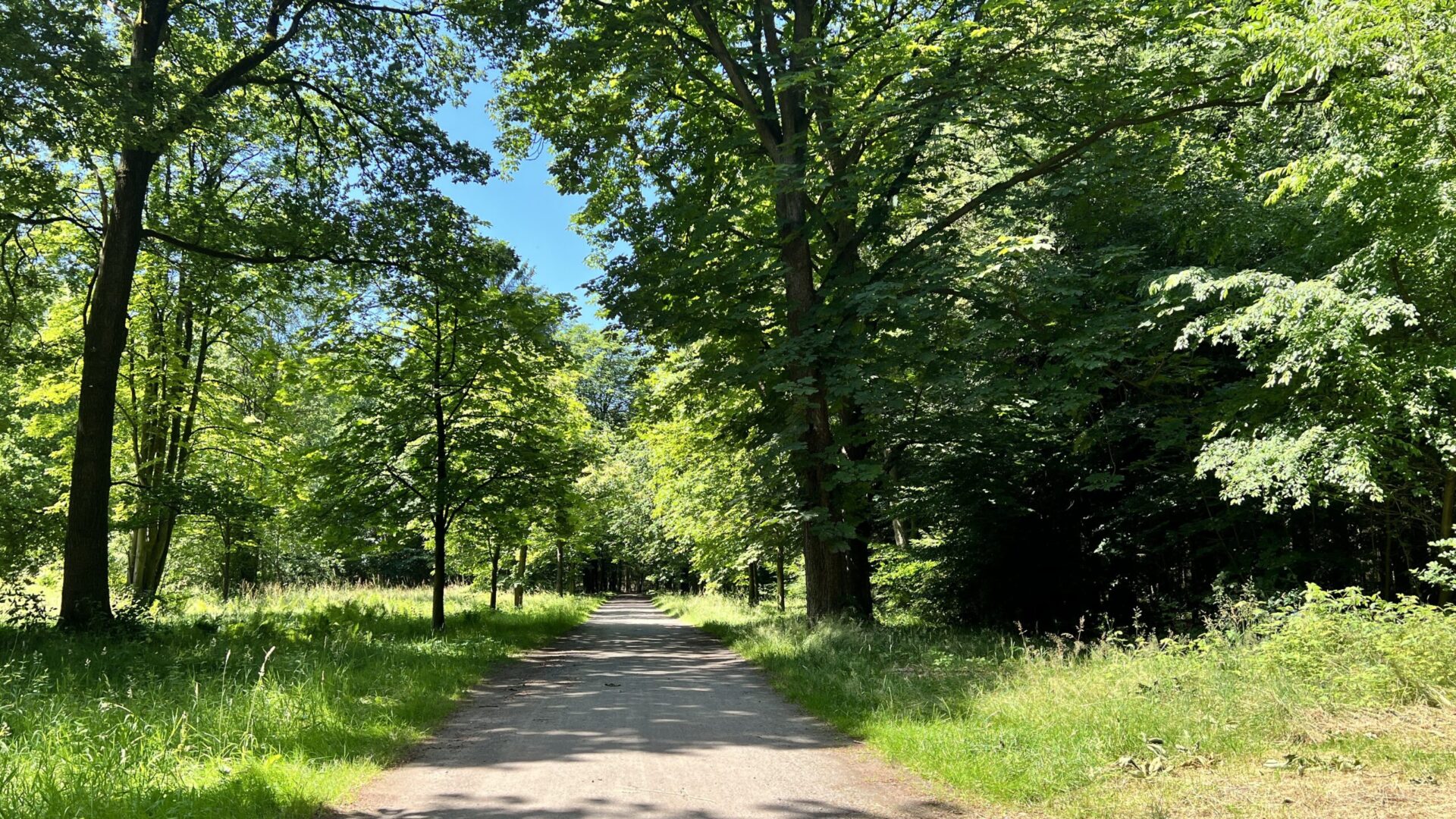The ancient "Loyer Kirchweg" (Loy church path) runs through the woods of the Rasteder palace park, the path that the inhabitants of the villages of Loy and Barghorn used in the past to attend church services in Rastede's St. Ulrich's Church on Sundays.
A long time ago, small farms existed along this stretch of the path. Remnants of this are still recognisable in the form of ditches that were dug at the time to drain the land.
But otherwise, the character of the landscape has changed completely.
Around 1870, Grand Duke Nikolaus Friedrich Peter purchased this agricultural land and had the conditions at the back of the palace completely redesigned according to his wishes. Because of the new layout, groves of horse chestnuts and sweet chestnuts were planted here on both sides of the path.
Chestnuts were one of the Grand Duke's favourite trees, especially because their fruit served as food for the wild. This is how the approximately 200m long section of the old Loyer Kirchweg became the "Kastanienallee" (in English: chesnut avenue).
In the course of time, however, the groves disappeared again. Only along the path were there trees left, and some were replanted so that the alley-like character of today was created.
Furthermore, several very old oaks, the former farm oaks of the old farms, are noticeable and are now registered as natural monuments. The mighty triple oak, seen in the open space opposite the alley, is also particular to mention. At the time of the chestnut plantations, three oak seedlings were probably placed together in one single planting hole.
Like everywhere in Europe, many chestnuts suffer from the so-called "leaf miner" nowadays. This insect, which originates from the Balkans and is about 4 mm in size, hibernates on the ground in the old foliage and lays its eggs in the leaves of the chestnuts in several generations from spring to autumn. Eaten by the larvae, the leaves turn strikingly brown already in midsummer and fall off the branches. However, because this species of moth does not attack red-flowered chestnuts, this variety is mainly used for replanting. Incidentally, all the replanted chestnuts were donated by citizens of Rastede.
